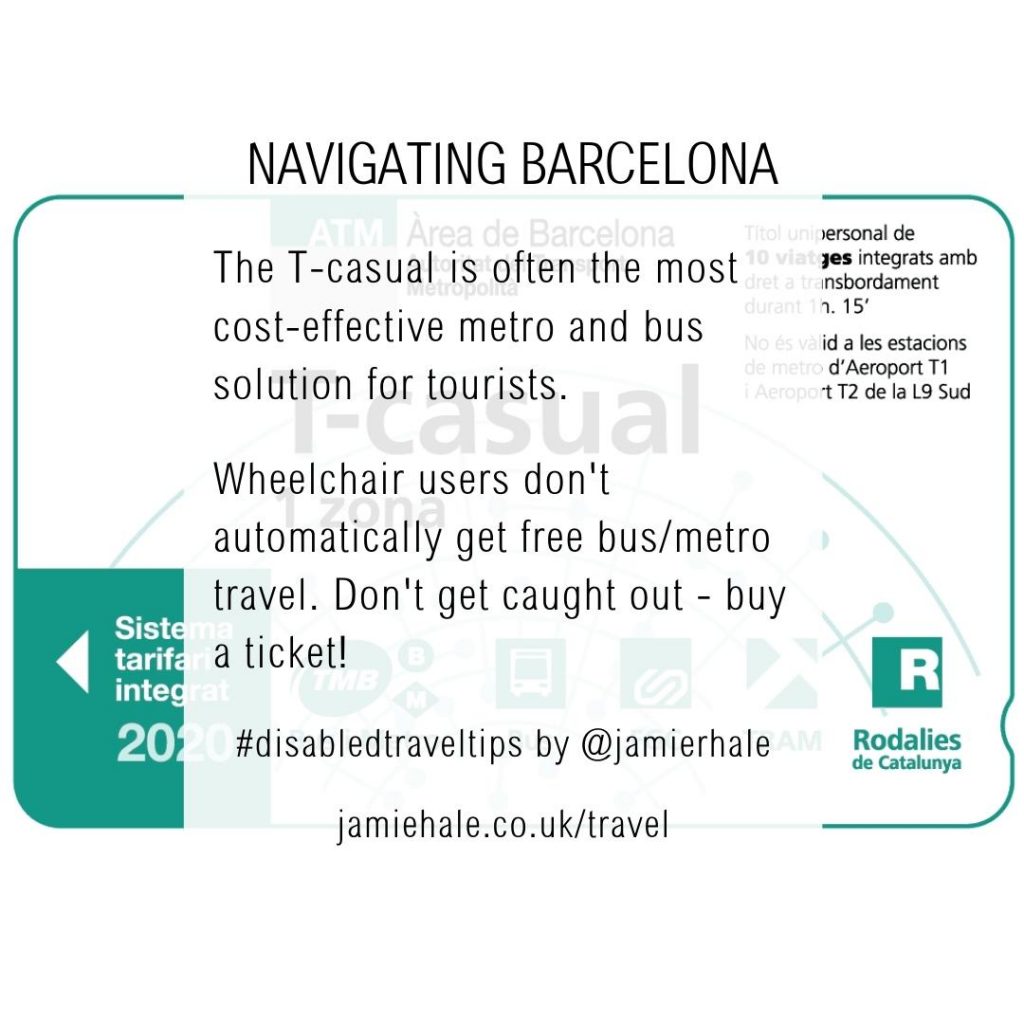







I love talking about how accessible Barcelona is. I’ve spent a lot of time there one way or another. I partially lived there a number of years ago, and it’s definitely my favourite city. Social care and benefits work differently in Spain, and I don’t think I could live independently as easily there. However, as a country to visit, it’s wonderful and even a decade after leaving, I still feel at home in Barcelona.
Pedestrian access and wheelchairs
Travelling the city on wheels was broadly relatively easy. There are places where the pavement is narrow, especially around trees, but otherwise it was alright. Where hills get steep, the camber on kerbs can be quite difficult. Barcelona was designed on a grid system. This means that most of the crossings are four-way making camber harder to navigate.
There are also traffic lights at far more crossings in Barcelona than in London. They generally stay green for a reasonably long time, and are quite quick to go green. This makes the city far more pedestrian friendly than it would otherwise be.
Travel tickets
Navigating it overall as a city is far easier than navigating London for me. A big part of that is because the public transport system has wheelchair access built in very effectively. Public transport isn’t always simple. The T-Casual system of buying a paper ticket to last ten journeys is a good idea . However, I quickly dog-eared my ticket in my wallet, stopping it working. They’re moving to a contactless magnetic card, but I couldn’t work out how to buy it. However, the accessibility of the system makes up for a lot, in my opinion.
You can get a discount on longer train journeys from Renfe if you have a Tarjeta Dorada. This is a type of disabled person’s railcard, which I bought, using the hotel address. I’ve had one since I lived out there, so each time I’ve just renewed using my PIP paperwork. With greater than 75% disability, this entitles you and an accompanier to up to 40% discount on certain train tickets.
If you’re travelling around Barcelona but not using lots of public transport, a T-Casual is the most cost-effective option.
Accessible Barcelona public transport
Bus and metro travel is not free for disabled people unless they have a (residents only) Tarjeta Rosa. Don’t get caught out, validate your ticket.
Metro
The Barcelona metro is almost all accessible, with a few exceptions. The key stations that aren’t accessible and that I wanted to be were Urquinaona and Plaça de Espanya. That said, Citymapper was very good at understanding accessible routes, so I followed its advice.
Trains
As in England, you can book ramp access for trains. I had no trouble turning up and going, but there were sometimes stock issues. The local Rodalies trains, going around the greater Barcelona area, should be accessible. However, the older trains on these routes are not accessible.
After waiting for several trains, just to discover inaccessible ones kept arriving, I cancelled a trip to Sitges. I didn’t want to be stranded there and unable to find a train back. However, while it was annoying for me as a tourist, this must be a nightmare for disabled residents.
Buses
The compact nature of the city overall makes it easier to navigate accessibly than London is. In Barcelona, the H buses cross the city horizontally, and the V buses vertically. This means most routes don’t need more than two buses, especially with almost all of the metro being accessible. If you’re using a T-Casual, one journey can last 75 minutes – so you don’t have to pay each time you change bus.
Buses usually have at least two wheelchair spaces with priority for wheelchair users, but this isn’t always observed
There really is a lot Barcelona could learn from London about access!